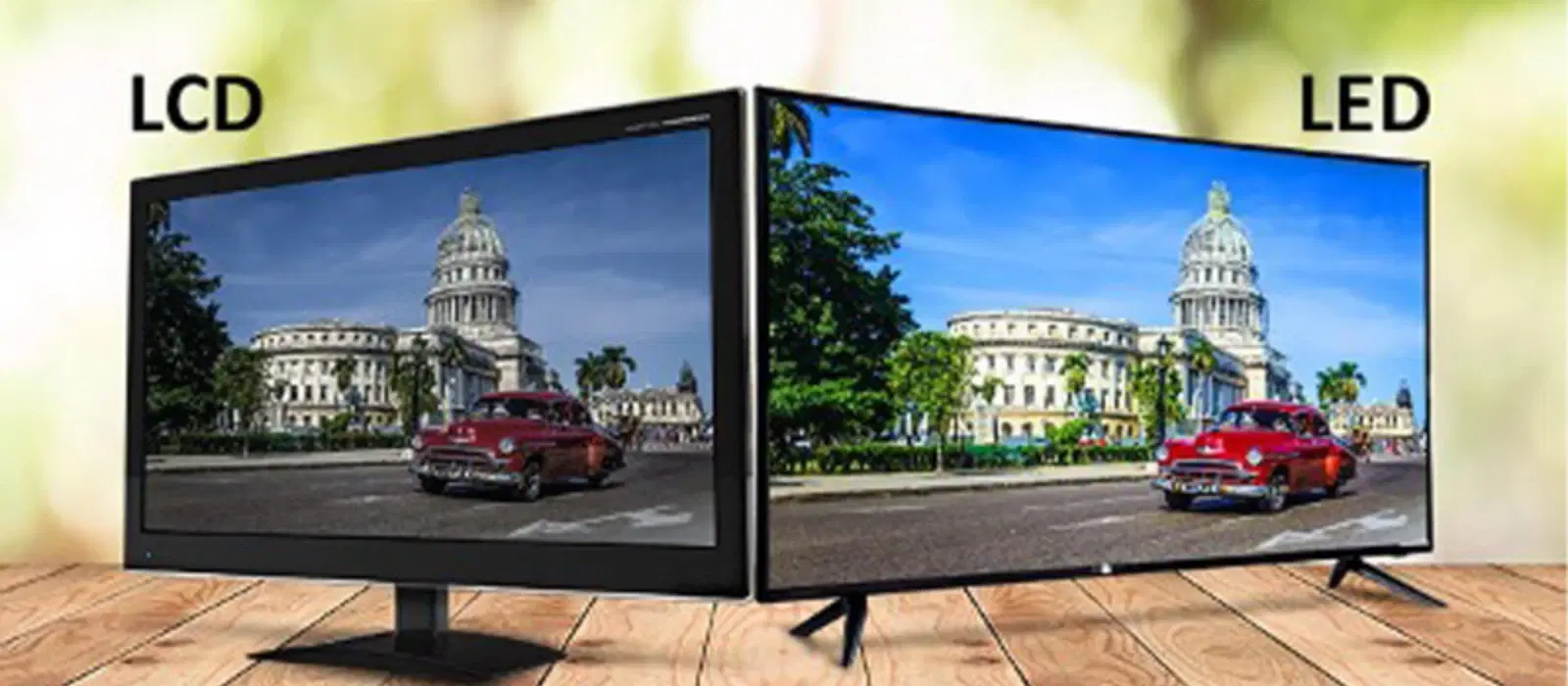
Consumer Electronics
•04 min read

Buy SAMSUNG S95D 165.1 cm (65 inch) OLED 4K Ultra HD Smart Tizen TV with Perception Color Mapping (2024 model) online at best prices from Croma. Check product details, reviews & more. Shop now!
Choosing the right display technology can be confusing, especially when faced with terms like OLED and LCD. Both dominate consumer electronics such as TVs, smartphones, and laptops, but knowing the key differences is essential to make an informed decision. Shop smart on Tata Neu and earn up to 5% NeuCoins with every purchase, with the benefit of same-day Express Delivery for orders placed before 6 PM. In this article, we answer frequently asked questions on OLED vs LCD – explaining their basics, image quality, durability, energy efficiency, and more so that you can choose the best display for your needs.
OLED (Organic Light Emitting Diode) and LCD (Liquid Crystal Display) are two popular display technologies. OLED displays create images through self-emissive pixels, with each pixel producing its own light. In contrast, LCDs rely on a backlight to illuminate the pixels. These differences make each technology suitable for a range of devices from smartphones and TVs to laptops.
Because OLED pixels light up individually, they can achieve true blacks and vibrant colour reproduction. In contrast, LCDs rely on backlighting, which can lead to light bleed and less precise contrast. This difference impacts screen quality, energy consumption, and even the manufacturing cost, with OLED displays generally leading in performance while LCD screens often offer affordability and durability.
OLED displays excel at delivering perfect blacks as each pixel turns off independently. This results in a remarkable contrast ratio ideal for watching movies or any visual content that demands deep blacks, making it stand out from LCD technology which uses a constant backlight that may cause some light bleed.
For those who value vibrant colours, OLED has the upper hand thanks to its ability to produce more saturated, lifelike colours. However, LCD screens maintain consistency in colour reproduction, which is particularly advantageous for professionals who work in fields like photo editing where colour accuracy is critical.
One of the major factors to consider is how the display looks from different angles. OLED technology maintains its brightness and colour accuracy even when viewed from wider angles. LCD screens, on the other hand, sometimes experience a drop in performance when not viewed straight-on due to limitations imposed by backlighting.
While OLED displays offer a superior viewing experience, they are susceptible to burn-in over long-term use. Conversely, LCD screens are generally known for their longer lifespan based on general trends observed in consumer devices. However, LCDs may also face issues like dead pixels over time. The longevity really depends on how the device is used and cared for.
In everyday situations such as gaming, productivity, or even outdoor use, durability is a key factor. While OLED displays provide an immersive visual experience, LCD screens often win out on durability, making them an attractive option for heavy daily usage.
OLED displays are typically more energy-efficient when darker images are displayed, as only the lit pixels consume power. When comparing OLED vs LCD power consumption, OLED displays often excel when displaying darker images, further enhancing their energy efficiency in specific scenarios. In contrast, LCD screens draw more consistent power due to the backlight being active regardless of the content's brightness. This factor can influence the overall energy consumption depending on your typical usage patterns.
When comparing prices, LCD displays are generally more affordable than OLED. However, for users who prioritise superior image quality and better viewing experience, OLED can often justify the higher price. Ultimately, the decision comes down to the balance between budget constraints and the desire for enhanced visual performance.
OLED offers excellent image quality, better contrast with true blacks, improved viewing angles and, in many instances, energy efficiency when displaying darker content. These benefits make OLED a popular choice among movie enthusiasts and digital content consumers seeking an immersive experience.
LCD screens are known for their affordability and robust durability. Their suitability for long-term use appeals to users seeking a reliable option for daily tasks and productivity. However, drawbacks include a more limited viewing angle and the potential for uneven backlighting, which may affect the overall screen quality when compared to OLED displays.
Expert Tip: The Secret to Choosing the Right Display
Did you know that OLED displays are ideal for movie enthusiasts who want deep blacks and vibrant colours, while LCDs are better for gamers who value durability and affordability? Your choice should depend on how you plan to use your screen most frequently.
OLED is better for image quality, contrast, and viewing angles, while LCD is more affordable and durable.
LCD generally lasts longer due to its resistance to burn-in, but OLED can offer similar longevity with proper care.
OLED is better for your eyes because it produces less blue light and offers more natural colours, helping reduce eye strain.
OLED phone screens offer superior colour vibrancy and contrast, while LCD screens are often more affordable and durable, making them suitable for budget-conscious users.
To summarise, OLED displays stand out with their superior image quality, energy efficiency, and outstanding viewing angles, making them a great choice for users focused on an immersive visual experience. On the other hand, LCD screens remain a solid option with their affordability, durability, and consistent performance under a variety of lighting conditions. Whether you lean towards the dynamic performance of OLED or prefer the cost-effective reliability of LCD, understanding these differences can help you make a choice that suits your personal demands – be it for professional work, gaming, or entertainment. Discover expert guidance, robust after-sales support, and exclusive NeuCoin rewards when you shop on Tata Neu or visit Croma stores.